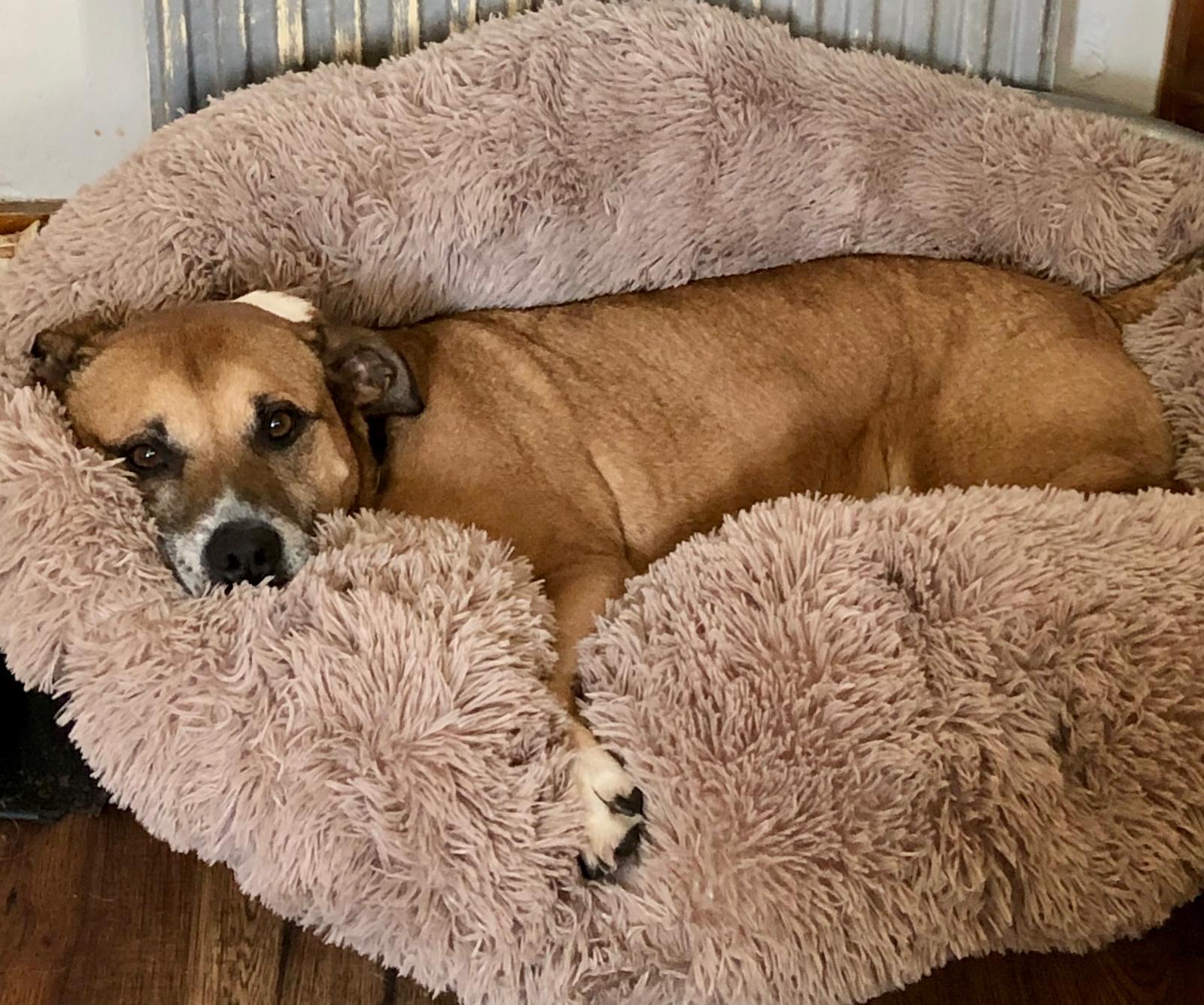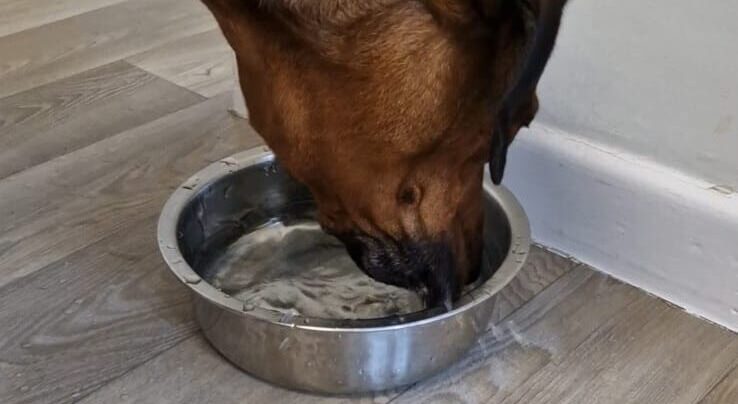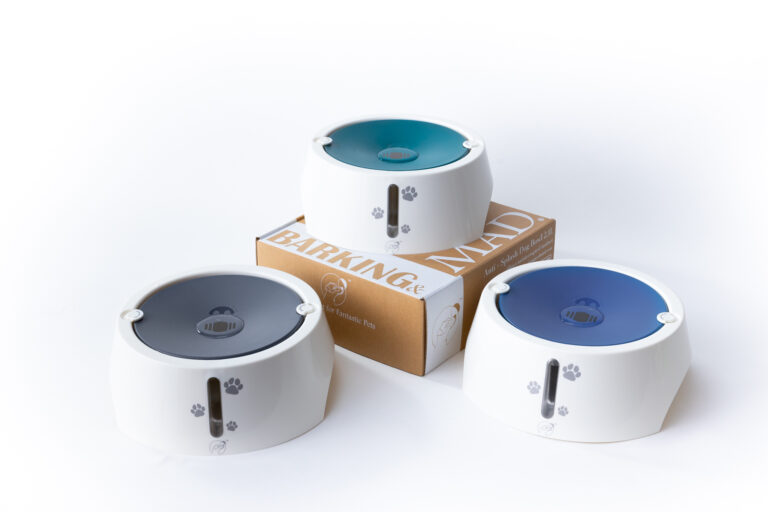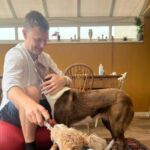Gastric Dilatation-Volvulus (GDV) aka “bloat” is a life threatening condition that requires immediate vet attention. Many dog owners have no idea how fast this can happen which is why recognising the signs of GDV can be the difference between life and death for your pet.
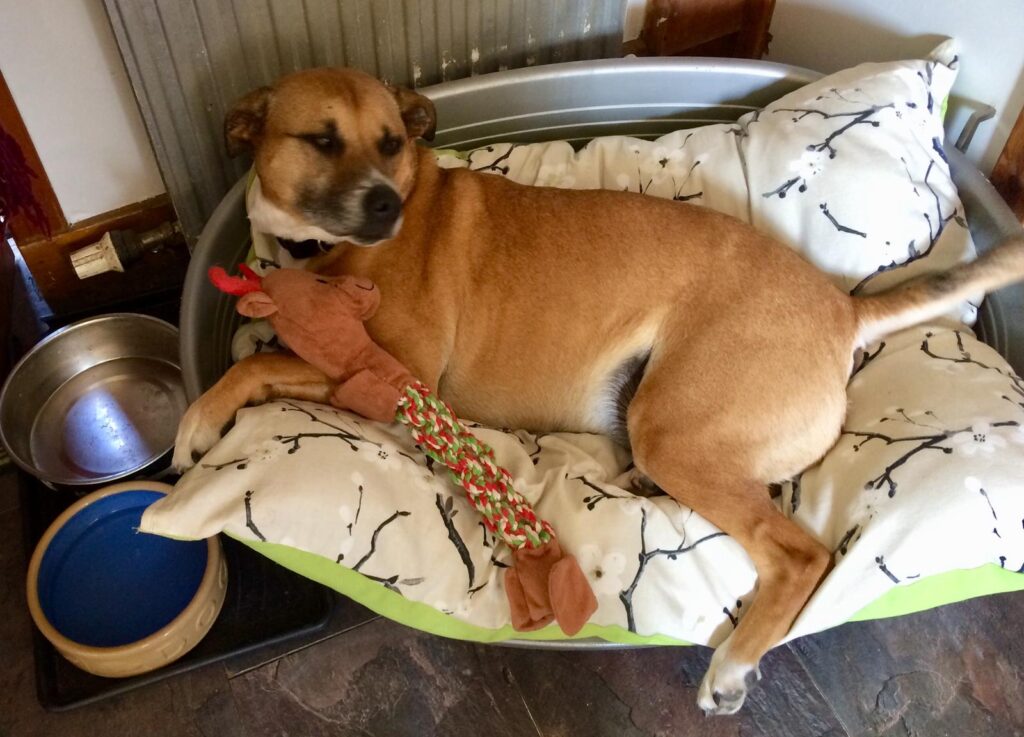
Have you ever seen your dog act weird after a meal—pacing, drooling, looking uncomfortable? It’s more than just a upset stomach.
In this post we’ll go over what GDV is, how to spot the early clinical signs and what to do if your dog shows symptoms. Whether you’re a new dog parent or a seasoned pet owner, knowing GDV could save your dog’s life.
This post is for education only and isn’t medical advice, i would always recommend speaking to a trained professional for advice.
What is Gastric Dilatation-Volvulus (GDV)?
GDV is a condition where a dog’s stomach fills with gas, fluid or food and expands (gastric dilatation). The stomach can then rotate twisting along its axis (gastric torsion) and trap the contents inside. This cuts off the blood flow to the stomach and other vital organs and rapid bad things happen.
Gastric outflow
As the gastric outflow obstruction gets worse the stomach wall becomes compromised and gastric necrosis (death of tissue) can occur. Once GDV sets in the clock starts ticking and without immediate intervention it can be fatal..
Who’s at Risk?
GDV can happen to any dog regardless of breed or size. However giant breed dogs and those with deep chests like Great Danes, German Shepherds and Saint Bernards are at higher risk.
Older dogs
Older dogs are more susceptible as their body wall muscles weaken over time. Knowing the risk factors is key especially if your dog is one of these high risk breeds.
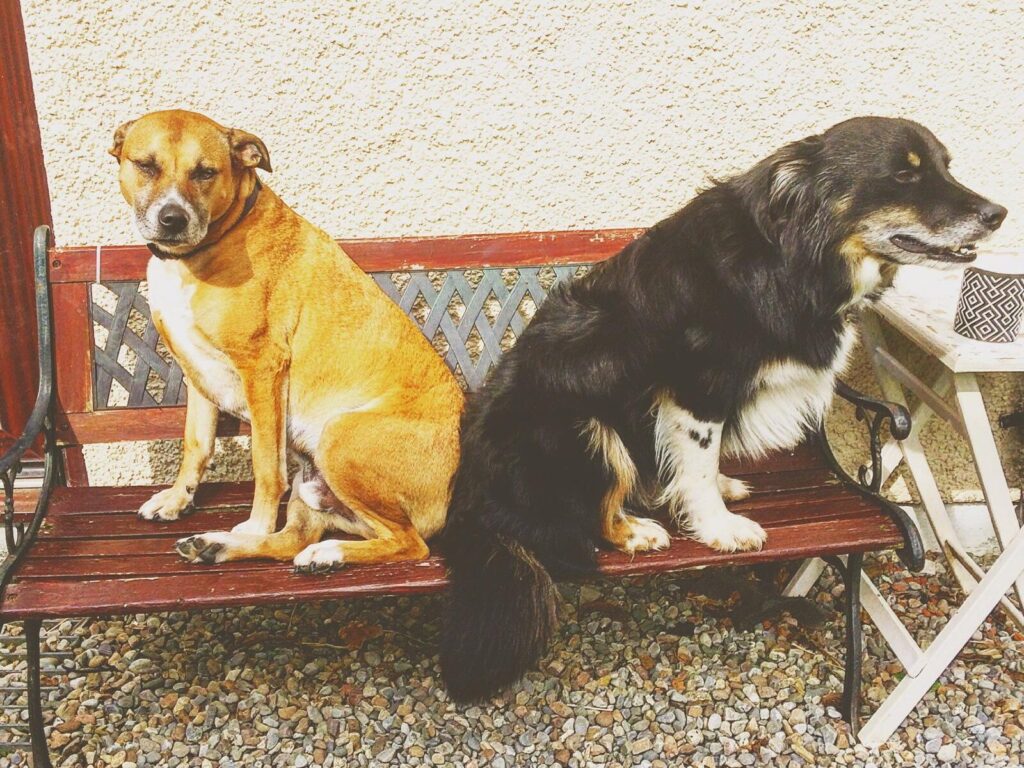
The Symptoms of GDV: What to Look For
Recognizing GDV in the early stages is key and it can be tricky as the symptoms can mimic indigestion or gas. Here’s a list of clinical signs to look for:
Vomiting fails: Your dog will try to vomit but nothing comes up. This is often the first sign of GDV.
Abdominal distension: The abdominal wall will become swollen and tight sometimes looking like a hard balloon.
Restlessness or pacing: Dogs with GDV feel uncomfortable. They will pace or appear anxious and can’t sit or lie down.
Excessive salivation: As the gastric dilatation gets worse dogs will salivate more than usual.
Rapid breathing or panting: Breathing difficulties or distress may occur as the swollen stomach presses on the lungs.
Weakness or collapse: As GDV gets worse it disrupts blood flow and drops blood pressure which can cause shock and collapse.
GDV is a life threatening emergency and the sooner your dog gets care the better their chances of survival.
What happens when a dog has GDV?
Once GDV sets in the stomach twists cutting off blood supply to vital organs and gas and fluid builds up in the stomach. The stomach expands and puts pressure on the major blood vessels which reduces cardiac output and can cause systemic hypotension (dangerously low blood pressure).
As the pressure increases there is a risk of gastric rupture where the stomach wall tears. Lack of oxygen and blood to the affected areas can cause tissue death (gastric necrosis) which requires surgery.
If left untreated GDV leads to multi organ failure due to lack of blood flow and oxygen. Disseminated intravascular coagulation (DIC) a fatal bleeding disorder can also occur.
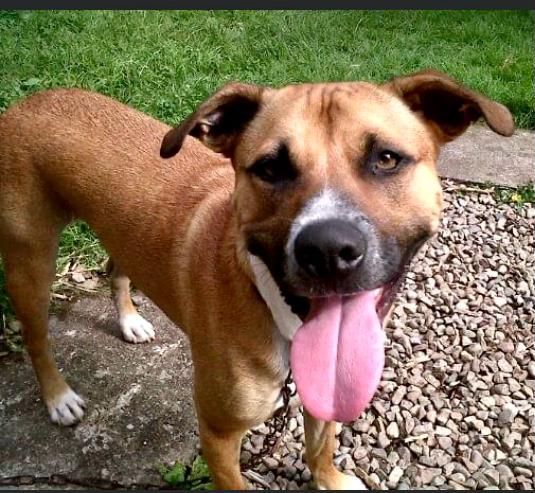
Complications and Survival Rates
The mortality rate of untreated GDV is high but with surgical intervention and prophylactic gastropexy (a preventative surgery) dogs can recover. According to studies the survival rate of dogs with GDV that get timely care can be as high as 80-90%. However several factors can affect the outcome including age of the dog, overall health and extent of damage.
Postoperative complications
Postoperative complications such as abnormal heart beats (ventricular fibrillation or ventricular tachycardia) and reperfusion injury (damage caused when blood supply returns to tissues after a period of oxygen deprivation) can occur but with proper postoperative monitoring and pain meds most dogs will recover well.
Treatment Options for Gastric Dilatation-Volvulus
When you get to the vet with a dog showing signs of GDV the medical team will act fast. Here’s what will happen:
Initial Stabilization
First priority is to stabilize the dog’s condition by getting blood pressure and oxygen back up. IV fluids are given to combat systemic hypotension and shock. Fluid resuscitation with IV fluids is key to getting circulation back and fluid therapy prevents dehydration.
Gastric Decompression
Once the dog is stable the vet will work to decompress the stomach. This is done by either passing a stomach tube into the dog’s stomach to release gas or by inserting a large bore needle into the abdominal wall to allow gas to escape. This relieves pressure on the stomach wall and other organs.
Surgery
If the stomach has twisted surgery is required to untwist it and assess the damage. During the procedure the vet may perform a partial gastrectomy or partial gastric resection to remove necrotic tissue caused by lack of blood supply. Prophylactic gastropexy (tacking the stomach to the body wall) is often done to prevent future twists.
Postoperative Care
After surgery the dog will need to be monitored for complications. Cardiac arrhythmias before and after surgery are common so the vet may use lidocaine to manage this. Post op care will also include pain meds, blood transfusions if needed and monitoring of vital signs such as plasma lactate and blood glucose levels.
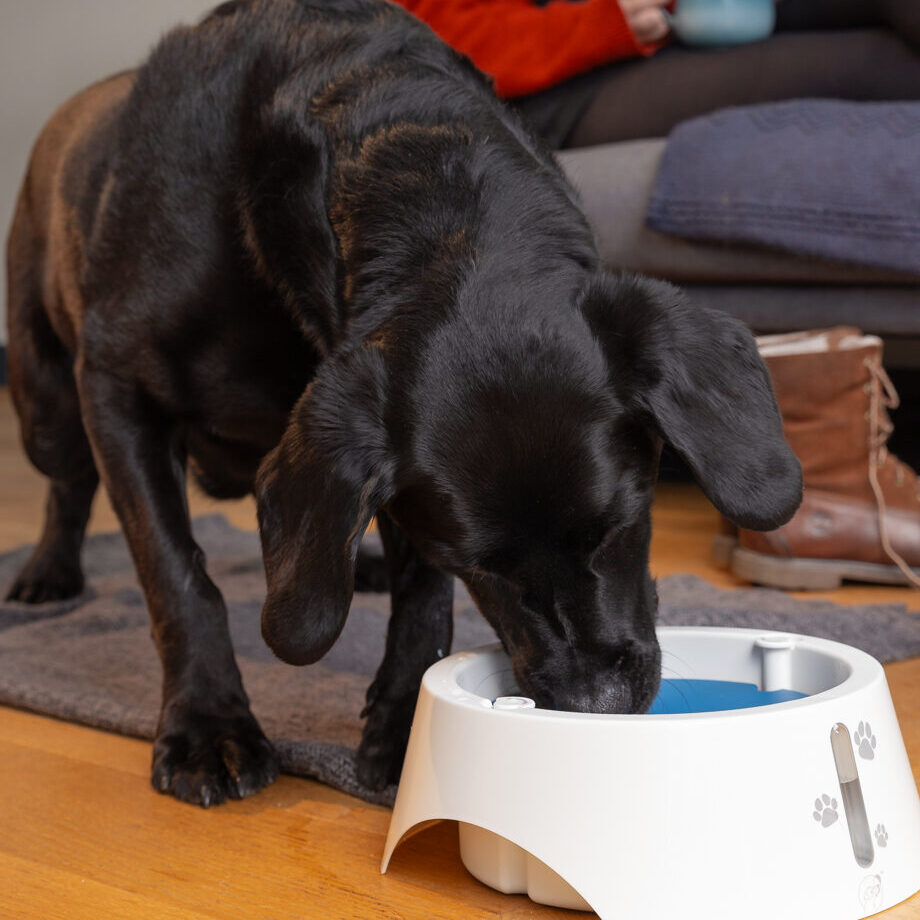
Can You Prevent GDV?
While you can’t completely prevent GDV you can reduce the risk:
Feed smaller more frequent meals: Instead of one big meal feed your dog 2 or more meals a day to not overwhelm the stomach.
Avoid exercise after meals: Don’t let your dog run or play after eating.
Limit water after meals: Too much water can contribute to gastric dilatation so wait at least 30 minutes after feeding.
Consider prophylactic gastropexy: If your dog is a high risk breed talk to your vet about this preventative surgery that can decrease the risk of GDV.
Risk Factors
Some risk factors for GDV are:
Being aware of these risk factors will help you take proactive steps to protect your dog.
FAQ: All About GDV
What are the first signs of GDV?
First signs of GDV are: unable to vomit, swollen abdomen, restlessness, excessive salivation and rapid breathing.
What is the survival rate for gastric dilatation volvulus?
Survival rate for dogs with GDV is high with immediate treatment 80-90%.
How long can a dog live with GDV?
Dog with GDV needs emergency care. Without treatment it can be fatal within hours.
What causes gastric dilation?
Most common cause of gastric volvulus is eating big meals or vigorous activity after eating which causes the stomach to twist.
How long can a dog live with gastric dilatation-volvulus?
Dog with untreated GDV will only live for a few hours as the condition gets worse fast.
What are the signs of gastric dilatation-volvulus in dogs?
Unsuccessful vomiting, bloated abdomen, restlessness, salivation and collapse.
What is the survival rate for dogs with GDV?
80-90% with immediate veterinary intervention.
How do you treat gastric volvulus in dogs?
Stabilize the dog, decompress the stomach and surgery to correct the twist and prevent recurrence.
How does a dog get GDV?
GDV occurs when the stomach fills with gas or food and the stomach twists and cuts off blood supply to the organs.
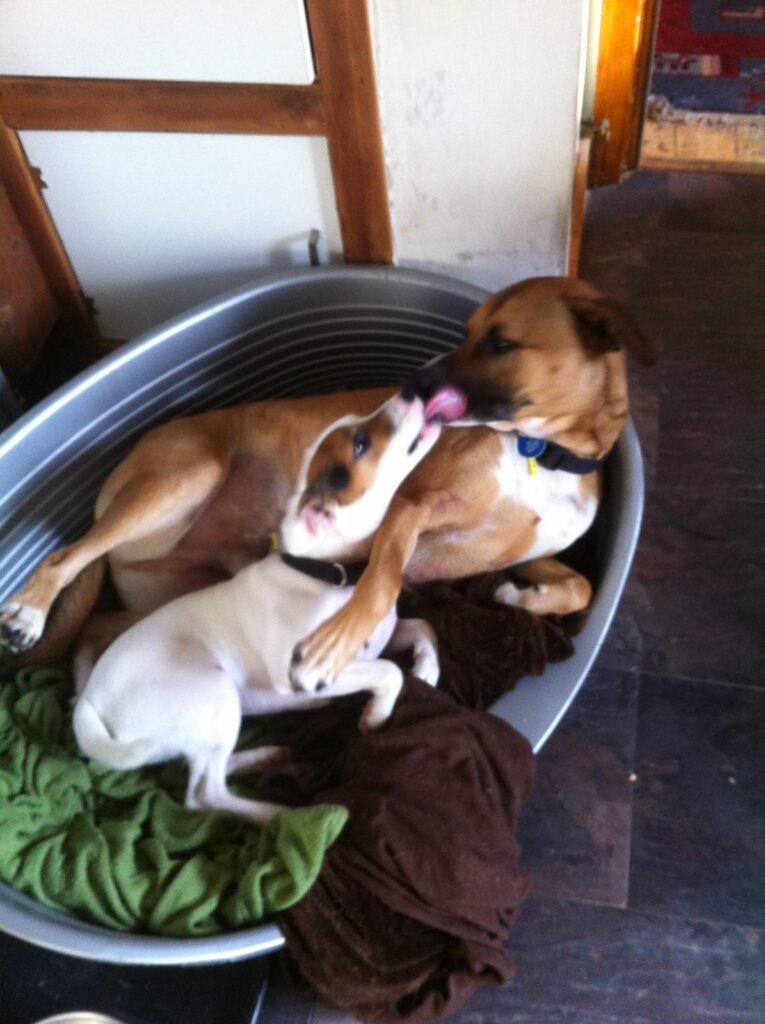
Act Fast
Knowing the signs of gastric dilatation-volvulus can save your dog’s life. This is a life threatening condition that progresses fast so early detection is key.
Always consult your vet if your dog shows signs of GDV and consider taking preventative measures such as feeding smaller meals or talking to your vet about prophylactic gastropexy for high risk breeds.
GDV is serious but with immediate treatment and proper management your dog can recover fully. Remember this blog is for awareness purposes only not to replace medical advice so always check with your vet if you suspect GDV in your dog.

